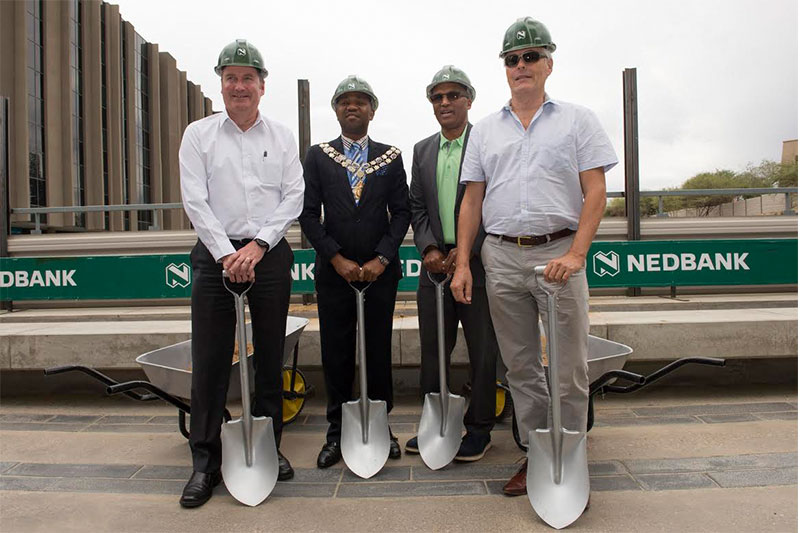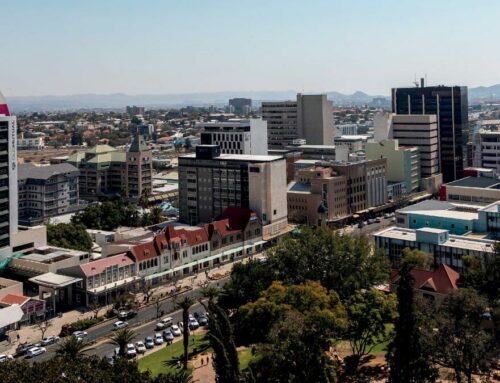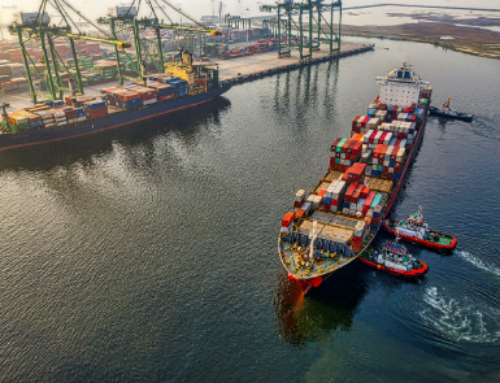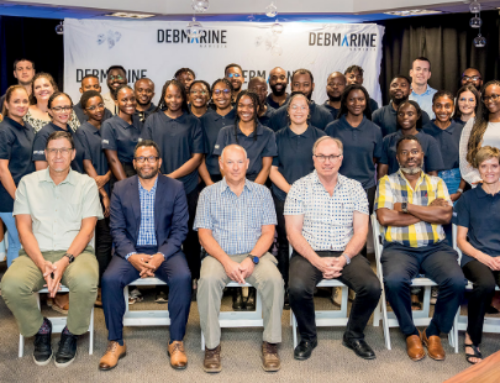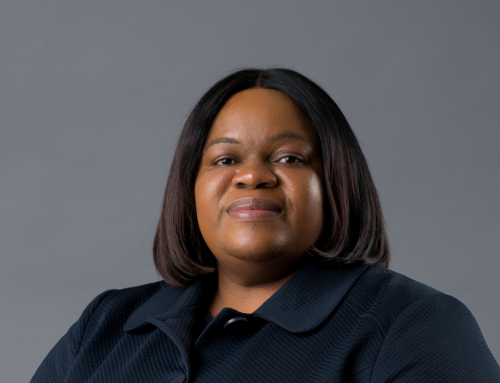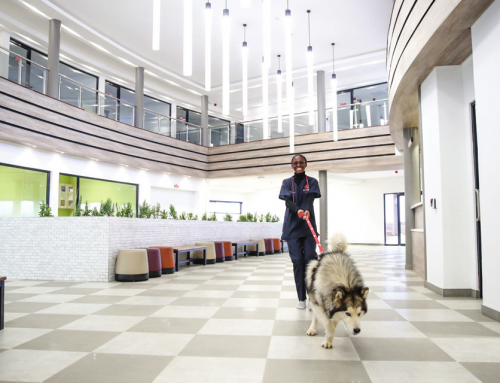Friday, 23 November Nedbank Namibia hosted a groundbreaking on the site where the bank’s new headquarters will stand at Freedom Plaza in the heart of the Windhoek Central Business District.
Speaking at the event Nedbank Namibia Managing Director, Lionel Matthews stated the key considerations behind the design of the new headquarters saying, “We are building a Great Place for Nedbankers to Work, and a Great Place for our clients to Bank and Invest. More importantly, though, we are investing in the economy of our country and the prosperity of our people. It is generally accepted that buildings consume 40 percent of the world’s energy and 25 percent of our fresh water, and generate 40 percent of waste landfill. This is why it was critical for us to design, construct and operate a building that is energy- and resource-efficient, and environmentally responsible.”
His worship Councilor Muesee Kazapua, the Mayor of the city of Windhoek who delivered the keynote address at the even applauded the bank for its continuous confidence in the economy of Windhoek, “Infrastructural development of this magnitude are testimony that Namibia’s investment policy and political atmosphere that prevail in our country, remains pivotal to our economic development.”
Nedbank is aiming to achieve a five-star green rating for their new headquarters, the second highest rating possible.
Silke van der Merwe: Nedbank Chief Operating Officer, said the project “not only further illustrates our commitment as a responsible corporate citizen to contribute to sustainable practices, but also provides an environment for their staff that allows them to be part of a sustainable future”.
“For years, Nedbank Namibia has been known as the green bank,” Pewer Fourie, founder of EmCon Project Management, a local entity tasked to spearhead the project from start to finish, says.
With this project, he added, the bank, which has for nearly two decades supported dozens of projects through its Go Green Fund and a number of other green events, is further underlining their commitment.
The headquarters will be located on Freedom Plaza, complementing the central business district’s skyline and overall urban landscape, and is bound to inspire awareness around the myriad of benefits of green architecture.
“We have seen how employees and clients change their outlook and behaviours at work and home as a result of working in a green building,” Fourie explained.
The only viable choice
From concerns about global warming to protecting biodiversity and human health, as well as attracting talent, the reasons for going green are multiple, and ultimately, crucial.
“Buildings consume 40% of the world’s energy and 25% of our fresh water, and generate 40% of waste landfill. It has become critical to design, construct and operate buildings that are energy- and resource-efficient and environmentally responsible,” Fourie stresses.
Namibia’s scarcity of water has offered the team an opportunity to showcase innovative water saving strategies, with the harvesting of rainwater and greywater recycling.
A sky garden populated with endemic and drought-resistant plants will add a pleasing natural aesthetic to the interior.
Namibia’s most plentiful resource, sunlight, on the other hand—which can cause discomfort to occupants—is being tackled through the use of solar shading to limit the amount of direct sunlight impacting occupants.
While it’s a pricey addition, Fourie says what is spent on solar shading will be offset by the amount of energy that would otherwise be required to achieve thermal comfort.
To derive as much benefit from the overabundance of sunlight, the design also includes strategies to counter the urban heat island effect on the roof by shading it with a solar panel roof structure.
At all times, the energy, waste and water performance will be displayed to occupants and visitors to foster awareness.
Creating awareness
Green buildings are not only good for the environment, but can also boost productivity and help reduce operating costs.
“The perception is still out there that a green building is more expensive than a conventional design. In part, this is true. The capital requirement might be slightly higher than a traditional building, but it’s proven through many studies that the operating cost make up for that initial investment fairly quickly,” Fourie explains.
But, on the plus side, research has proven green buildings attract higher rentals and have lower tenant churn.
Fourie says Namibia could greatly benefit if all designers attain at least some green credentials, as “this is not just good for the owners of buildings, or the environment, but, more importantly, our planet desperately needs this.”
From scratch
The sustainable and environmentally responsible aspects of the building start well before the design has been finalised.
Green building ratings take into account many elements, including whether members of the design and contracting teams have attained green building qualifications, and proof of a waste and environmental management plan to govern responsible material use.
Fourie said in this case, 70% of the soil excavated at the site, will be re-used on other projects rather than being diverted to a landfill.
The construction steel will consist of 90% recycled metal.
Energy consumption, one of the most important aspects of the green rating system, requires intense focus on the quality of the indoor environment, including the amount of fresh air, external views, thermal comfort and noise output level.
In order to minimize greenhouse gas emissions, the design will incorporate a metering system, which at “a very granular level”, will monitor and control the effective use of energy.
With an eye to the future and the hope that staff and visitors will ditch their cars in favour of more environmentally-conscious transport options, the headquarters will host a cycling facility.
Another rating requirement is to ensure that the building maintenance staff and occupants are fully trained on how to manage and maintain the building.
As such, for 12 months after occupation, the professional team and contractors will fine-tune all systems to ensure they perform as per the design.
Nedbank has also begun a three-year programme to prepare staff and introduce sustainability practices into their existing buildings.
